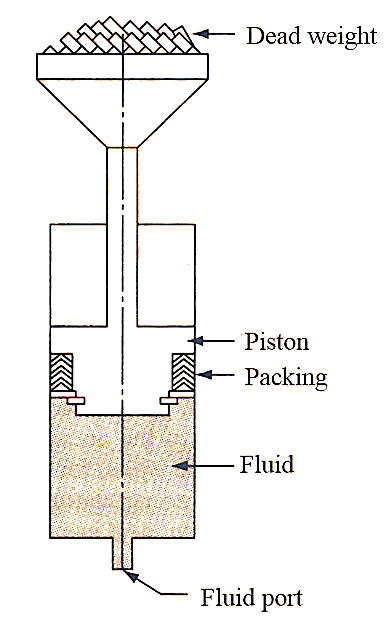Weight loaded accumulator is one of the oldest accumulator.
Construction of Weight loaded Accumulator
It consists of a vertically mounted large cylinder made of steel and a piston rod or a plunger loaded with a dead weight. The piston is incorporated in the steel cylinder and cylinder packings are provided to prevent any leakage of hydraulic fluid. The schematic diagram of a weight loaded accumulator is shown in below figure 1.

Figure 1: Weight loaded Accumulator
Working of Weight loaded Accumulator
Initially, the hydraulic fluid is pumped into the accumulator cylinder. Due to this, the piston raises from the lower most position, thus the dead weight. The fluid is allowed into the cylinder until the piston reaches its uppermost position. The dead weight loaded on top of the piston develops a gravitational force which provides the potential energy in the cylinder. This accumulator, applies a constant pressure on the fluid throughout its range of motion irrespective of the rate and quantity of output fluid. Due to its large size and heavy weight, this accumulator is not suitable for mobile equipment, i.e., not portable.
Applications of Weight loaded Accumulator
This type of accumulators are used in lifts or cranes operated by fluid power.